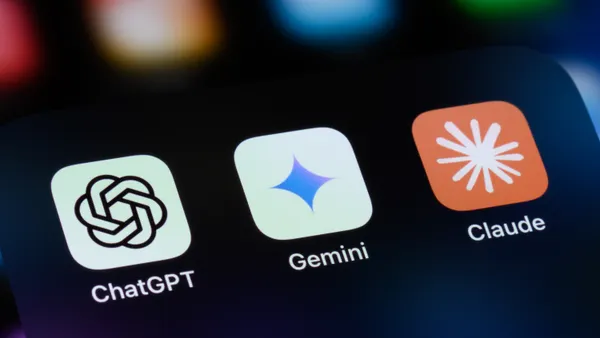The holiday shopping season is fast approaching, and research shows that consumers are warming up to using AI in their journeys.
Over half of consumers plan to use the technology during the Black Friday-Cyber Monday weekend, according to a Klaviyo report. The trend isn’t a sudden shift, but an evolution of last year’s shopping behavior. Two in five holiday purchases last year were influenced by consumers engaging with AI-powered tools and assistants, according to Salesforce data.
Consumers being open to generative AI doesn’t mean everyone is using it, or using it in the same way. Only 3% of consumers say they start their shopping journey with a ChatGPT-type search, while nearly one-third start with a search engine, according to Coveo research.
Retailers can add generative AI where it complements common shopping experiences, like making research faster and easier, but they should be wary of making investments based on hype alone, experts say.
“Your customers are not saying, ‘Hey, I want a generative AI shopping tool,’” Brad Jashinsky, director analyst at Gartner, told CX Dive. “They're saying, ‘Hey, I'm trying to find a gift for a dad who's into these features and I have $20 to spend.’ And in that case, it may make sense to utilize a generative AI tool for that.”
Generative AI’s role in research is growing
Research is a top application for consumers open to using generative AI in their e-commerce journeys.
A majority of consumers, 65%, say they plan to use generative AI tools for their holiday shopping this season, according to Accenture data. That share is up from 40% in 2024.
A smaller but still significant share of consumers, 44%, is willing to let AI handle or assist with their shopping tasks, Gartner found.
One of the most popular consumer applications for generative AI is researching products in natural language, according to Jill Standish, senior managing director and global lead for retail at Accenture. This is in line with Gartner’s research, which found that nearly two-thirds of consumers define themselves as maximizers who exhaustively research product options.
Conversational experiences can turn AI into a helpful concierge, according to Standish. Consumers are more comfortable asking questions like they would speak to a friend rather than trying to find the right search terms.
“Consumers are saying, ‘What do you recommend?’ Standish said. “‘Give me advice. What should I buy? What's trending for a 16-year-old? What's trending for a new baby?’ That's becoming natural for people to do, and retailers need to do the same thing.”
There’s still no rush for implementation
Vendors tend to overhype consumers’ adoption of AI and retailers should take care when implementing it, according to Jashinsky.
While generative AI has potential to improve CX, it doesn't hurt to take it slow. Few multibrand retailers have their own generative AI experiences, according to Gartner Digital IQ research. Only 7% are offering AI-powered review summaries on product detail pages, while just 5% have AI-powered shopping assistant chatbots.
One way retailers can take advantage of generative AI is by influencing their visibility on third-party platforms like ChatGPT and Gemini, according to Jashinsky. A lot of consumers are using these tools, making them a growing part of the holiday shopping experience.
At its worst, generative AI can slow down rather than improve e-commerce CX, according to Jashinsky. Teams need to start from the problem, then work backwards to determine whether generative AI is the solution.
“If you're putting AI functionality into a process and you're not careful, it can actually impact conversion and make it more complicated,” Jashinsky said. “So I think retailers need to be really selective about whether generative AI makes the CX problem better, or does it slow down the process.”











